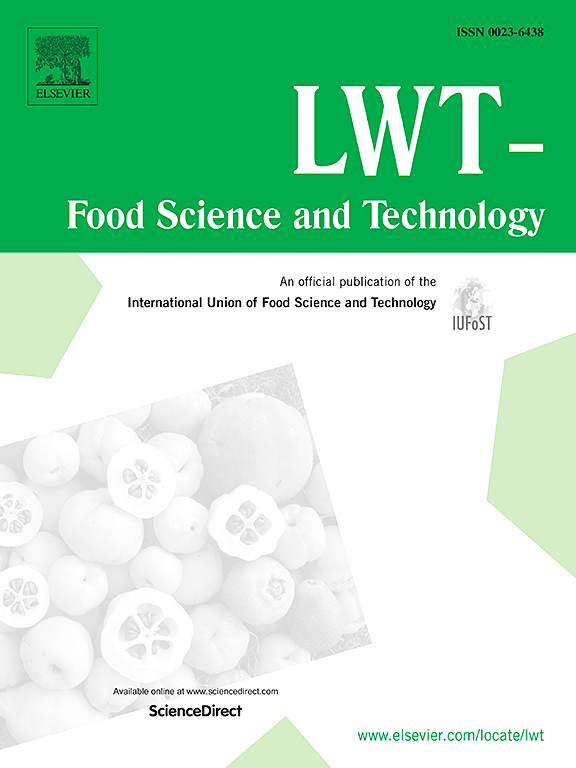Regulating effects of beet pectin on the stability and 3D printing performance of high internal phase pickering emulsions stabilized by lactoferrin-EGCG
IF 6
1区 农林科学
Q1 FOOD SCIENCE & TECHNOLOGY
引用次数: 0
Abstract
This study aimed to develop lactoferrin-polyphenol-polysaccharide (LF-EGCG-BP) ternary covalent complexes to improve the stability and 3D printing performance of fish oil high internal phase emulsions (HIPEs) stabilized by lactoferrin-polyphenol (LF-EGCG) binary covalent complex. The effects of beet pectin (BP) on the physicochemical properties, structure, interfacial behavior, rheological properties and stability of LF-EGCG HIPEs were investigated. Results showed that the fluorescence quenching mechanism of BP on LF-EGCG was static quenching. BP (especially at 20:1 (w/w)) efficiently improved the stability of LF-EGCG HIPEs by enhancing the mechanical property of interfacial films and network structure. After the addition of BP, the droplet size of HIPEs was reduced, lipid oxidation stability, physical stability, and multiple light scattering stability were increased. Raman spectra showed that the interaction between oil phase and aqueous phase of HIPEs was enhanced after the introduce of BP. The free fatty acids (FFA) release in HIPEs stabilized by LF-EGCG-BP was decreased. Meanwhile, BP increased the viscoelasticity, recovery and gel strength of HIPEs, giving the HIPE inks better 3D printing integrity and clarity.
甜菜果胶对乳铁蛋白-EGCG 稳定的高内相挑拣乳液的稳定性和 3D 打印性能的调节作用
本研究旨在开发乳铁蛋白-多酚-多糖(LF-EGCG-BP)三元共价复合物,以改善由乳铁蛋白-多酚(LF-EGCG)二元共价复合物稳定的鱼油高内相乳液(HIPEs)的稳定性和3D打印性能。研究了甜菜果胶(BP)对 LF-EGCG HIPE 的理化性质、结构、界面行为、流变性质和稳定性的影响。结果表明,BP 对 LF-EGCG 的荧光淬灭机制是静态淬灭。BP(尤其是 20:1 (w/w))通过提高界面薄膜的机械性能和网络结构,有效地改善了 LF-EGCG HIPE 的稳定性。添加 BP 后,HIPE 的液滴尺寸减小,脂质氧化稳定性、物理稳定性和多重光散射稳定性均有所提高。拉曼光谱显示,引入 BP 后,HIPEs 油相和水相之间的相互作用增强。LF-EGCG-BP 稳定的 HIPE 中游离脂肪酸(FFA)的释放量减少。同时,BP 增加了 HIPE 的粘弹性、恢复性和凝胶强度,使 HIPE 油墨具有更好的 3D 打印完整性和清晰度。
本文章由计算机程序翻译,如有差异,请以英文原文为准。
求助全文
约1分钟内获得全文
求助全文
来源期刊

LWT - Food Science and Technology
工程技术-食品科技
CiteScore
11.80
自引率
6.70%
发文量
1724
审稿时长
65 days
期刊介绍:
LWT - Food Science and Technology is an international journal that publishes innovative papers in the fields of food chemistry, biochemistry, microbiology, technology and nutrition. The work described should be innovative either in the approach or in the methods used. The significance of the results either for the science community or for the food industry must also be specified. Contributions written in English are welcomed in the form of review articles, short reviews, research papers, and research notes. Papers featuring animal trials and cell cultures are outside the scope of the journal and will not be considered for publication.
 求助内容:
求助内容: 应助结果提醒方式:
应助结果提醒方式:


